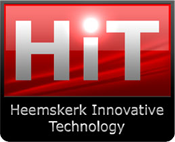Evaluating ITER remote handling middleware concepts
Abstract:
Remote maintenance activities in ITER will be performed by a unique set of hardware systems, supported by an extensive software kit. A layer of middleware will manage and control a complex set of interconnections between teams of operators, hardware devices in various operating theatres, and databases managing tool and task logistics. The middleware is driven by constraints on amounts and timing of data like real-time control loops, camera images, and database access.
The Remote Handling Study Centre (RHSC), located at FOM institute DIFFER, has a 4-operator work cell in an ITER relevant RH Control Room setup which connects to a virtual hot cell back-end. The centre is developing and testing flexible integration of the Control Room components, resulting in proof-of-concept tests of this middleware layer. SW components studied include generic human-machine interface software, a prototype of a RH operations management system, and a distributed virtual reality system supporting multi-screen, multi-actor, and multiple independent views. Real-time rigid body dynamics and contact interaction simulation software supports simulation of structural deformation, “augmented reality” operations and operator training.
The paper presents generic requirements and conceptual design of middleware components and Operations Management System in the context of a RH Control Room work cell. The simulation software is analyzed for real-time performance and it is argued that it is critical for middleware to have complete control over the physical network to be able to guarantee bandwidth and latency to the components.
